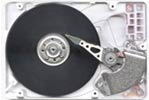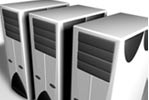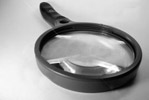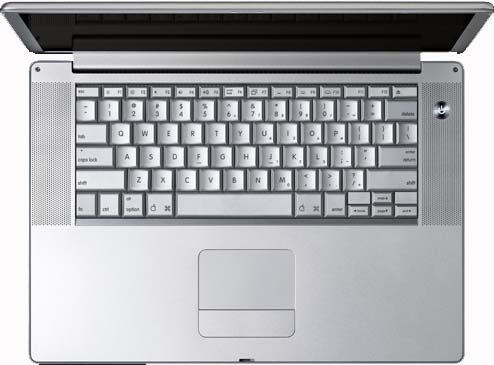 |
 |
 |
 |
 |
 |

|  |
 |
|
 |
 |
 |
| HARD DISK RECOVERY | LAPTOP RECOVERY | RAID RECOVERY | EXCHANGE RECOVERY | FORENSIC RECOVERY |
What is Data Recovery? What Causes Data Loss? Data Recovery is the procedure in which engineers salvage and extract data from hard disk drives and other storage media corrupted by a wide array of mechanical and human error. What is a file system? A file system is the way in which the computer stores data on the HDD. The most common file systems are FAT16 for older, FAT32 and NTFS. FAT stands for File Allocation Table. NTFS stands for NT File System which was first used in Windows NT (thus the name). It boast s better reliability, security (as it has added security for file loss), and file management than the older FAT System. Both systems have advantages and disadvantages. NTFS is considered to be a far more secure, in addition to offering more flexible cluster sizes as a file systems than any of the FAT's. The cluster sizes can be modified to as low as 512bytes, which means almost no wasted space on the hard disk. The maximum disk size is an incredible 18.5 x 10¹º bytes, which is gigantic !. Platters: It is the media upon which the megnatic data is stored. Often platters are made of an aluminum alloy, however IBM is opting for glass platters as it offers better thermal stability. The media layer is a very thin coating of magnetic material, which is applied by either using the electroplating or sputtering method, it is typically only a few millionths of a centimeter in thickness; upon which the data is stored. Data are recorded in a form of a thin magnetic patterns on the platters surface's; the bulk of the material of the platter is called the substrate and does nothing but support the media layer. Each platter has two surfaces capable of holding data; each surface is read/written by a single head floating just above it. Often both surfaces of each platter are used, but not always. The platters are juxtaposed so that they form an overlaying of parallel layers. Multi plattered drives are more sofisticated to devise than those with a single platter, due to the extra stress added on the spindle by the added weight of the extra platter/s. Subsequently, weight, noise and vibration strongly influences the design aspects of the hard drives.
The Head/s: The Head/s of the hard disk are the interface between the magnetic physical media upon which the data is stored and the electronic components that make up the rest of the hard disk. The Head/s converts bits to magnetic pulses and storing them on the magnetic platters. The hard disk performance is assessed mainly by the Head/s speed and effeciency, since reading and writing data is carried out solely by the Head/s. New head technologies are often the triggering point enhance the speed and size of modern hard drives.
The actuator: The actuator is a device used to position the to different tracks on the surface of the platter (actually, to different, since all head arms are moved as a synchronous unit, so each arm moves to the same track number of its respective surface). The actuator is a very important part of the hard disk, because changing from track to track is the only operation on the hard disk that requires active movement: changing heads is an electronic function, and changing sectors involves waiting for the right sector number to spin around and come under the head (passive movement). Changing tracks means the heads must be shifted, and so making sure this movement can be done quickly and accurately is of paramount importance. This is especially so because physical motion is so slow compared to anything electronic typically a factor of 1,000 times slower or more. Head actuators come in two general varieties:
|
||||
RAID data recovery, Mac data recovery, Unix data recovery, Linux data recovery, Oracle data recovery, CD data recovery, Zip data recovery, DVD data recovery , Flash data recovery, Laptop data recovery, PDA data recovery, Ipaq data recovery, Maxtor HDD, Hitachi HDD, Fujitsi HDD, Seagate HDD,
Hewlett-Packard HDD, HP HDD, IBM HDD, MP3 data recovery, DVD data recovery, CD-RW data recovery, DAT data recovery, Smartmedia data recovery, Network data recovery, Lost data recovery, Back-up expert data recovery, Tape data recovery, NTFS data recovery, FAT 16 data recovery, FAT 32 data recovery, Novell data recovery, Recovery tool data recovery, Compact flash data recovery, Hard drive data recovery, IDE data recovery, SCSI data recovery, Deskstar data recovery, Maxtor data recovery, Fujitsu HDD data recovery, Samsung data recovery, IBM data recovery, Seagate data recovery, Hitachi data recovery, Western Digital data recovery, Quantum data recovery, Microdrives data recovery, Easy Recovery, Recover deleted data , Data Recovery, Data Recovery Software, Undelete data, Recover, Recovery, Restore data, Unerase deleted data, unformat, Deleted, Data Destorer, fat recovery, Data, Recovery Software, File recovery, Drive Recovery, Recovery Disk , Easy data recovery, Partition recovery, Data Recovery Program, File Recovery, Disaster Recovery, Undelete File, Hard Disk Rrecovery, Win95 Data Recovery, Win98 Data Recovery, WinME data recovery, WinNT 4.x data recovery, WinXP data recovery, Windows2000 data recovery, System Utilities data recovery, File data recovery, Disk Management recovery, BitMart 2000 data recovery, Hard Drive Data Recovery, CompactFlash I, CompactFlash II, CF Compact Flash Type I Card,CF Compact Flash Type II Card, MD Micro Drive Card, XD Picture Card, SM Smart Media Card, MMC I Multi Media Type I Card, MMC II Multi Media Type II Card, RS-MMC Reduced Size Multi Media Card, SD Secure Digital Card, Mini SD Mini Secure Digital Card, TFlash T-Flash Card, MS Memory Stick Card, MS DUO Memory Stick Duo Card, MS PRO Memory Stick PRO Card, MS PRO DUO Memory Stick PRO Duo Card, MS Memory Stick Card MagicGate, MS DUO Memory Stick Duo Card MagicGate, MS PRO Memory Stick PRO Card MagicGate, MS PRO DUO Memory Stick PRO Duo Card MagicGate, MicroDrive Card and TFlash Memory Cards, Digital Camera Memory Card, RS-MMC, ATAPI Drive, JVC JY-HD10U, Secured Data Deletion, IT Security Firewall & Antiviruses, PocketPC Recocery, System File Recovery , RAID
